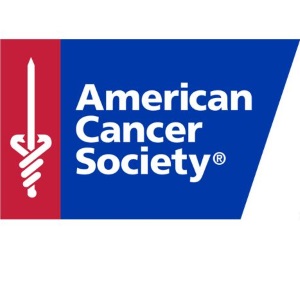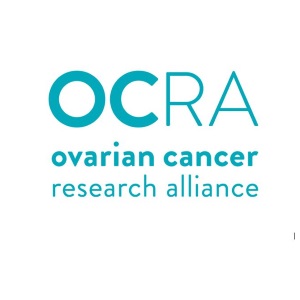Ovarian Cancer Disparities
- less likely to be diagnosed with ovarian cancer
- less likely to die from ovarian cancer
- but less likely to live as long with ovarian cancer
News
Data

W=White 11.7 H=Hispanic 10.4
A=Asian/Pacific Islander 9.5 B=Black 9.1 NA=Native American 8.4
Source: National Cancer Institute Cancer
Stat Facts: Ovarian Cancer

W=White 6.9, NA=Native American 6.0,
B=Black 5.9, H=Hispanic 5.1, A=Asian/Pacific Islander 4.4
Source: National Cancer Institute Cancer
Stat Facts: Ovarian Cancer
Women with Ovarian Cancer
Coretta Scott King

The widow of Martin Luther King, Jr., died in 2006 at age 78 in Mexico where she was undergoing holistic therapy for stroke and advanced-stage ovarian cancer.
Brandi Maxiell

Television personality Brandi was planning her wedding to professional basketball player Jason Maxiell when she was stricken with ovarian cancer at the age of 24.
Valisia LeKae

While playing Diana Ross in the Broadway show Motown: The Musical, Valisia LeKae was diagnosed with ovarian cancer at age 34. She didn’t have any family history of the disease or any symptoms.
Linda’s Story: Ovarian Cancer
The story of Linda, an ovarian cancer survivor, who encourages other women to listen to their bodies and advocate for their health.
A 90-second video from the CDC.
Ovarian Cancer Disparities
Incidence
White women. White women have the highest incidence of ovarian cancer, followed by Hispanics, Asian/Pacific Islanders, and American Indian/Alaska Natives. Black women have the lowest incidence rates.
The incidence of ovarian cancer has declined considerably over time, with an average annual percent decrease of 1.8% during 2005–2014. This decline has differed markedly by race and ethnicity, where the greatest decline was observed among white women in comparison to other races. More recent trends also indicate that an even steeper decline in incidence is occurring for white women as of 2010, where the average annual percent decline was 3.1% during 2010–2014.
Lauren C Peres and J.M. Schildkraut. Racial/ethnic disparities in ovarian cancer research. Adv Cancer Res 2020;146:1-21. doi: 10.1016/bs.acr.2020.01.002.
Tumor subtypes
Asian American women. Asian women are considerably more likely to be diagnosed with clear cell ovarian cancer.
Lauren C Peres and J.M. Schildkraut. Racial/ethnic disparities in ovarian cancer research. Adv Cancer Res 2020;146:1-21. doi: 10.1016/bs.acr.2020.01.002.
Stage at diagnosis
Asian American women. Asian women are more likely to be diagnosed with early stage disease, likely because they’re diagnosed more frequently with clear cell carcinoma which is predominately an early stage disease.
Lauren C Peres and J.M. Schildkraut. Racial/ethnic disparities in ovarian cancer research. Adv Cancer Res 2020;146:1-21. doi: 10.1016/bs.acr.2020.01.002.
5-year survival
Black women. Black women with ovarian cancer experience the poorest 5-year relative survival (36%), while survival for white women is approximately 46%. A lthough sparse data exist on the survival of other racial/ethnic groups, there is evidence of a better survival among Hispanic and Asian women in comparison to white and Black women.
Survival with ovarian cancer improved significantly from 1990 to 2009 for white women, while no change in survival was observed for Asian women. In contrast, Black women experienced a significant decline in survival during the 20-year time period.
Lauren C Peres and J.M. Schildkraut. Racial/ethnic disparities in ovarian cancer research. Adv Cancer Res 2020;146:1-21. doi: 10.1016/bs.acr.2020.01.002.
Between 1975 and 2016, the 5-year relative survival rate for ovarian cancer increased from 33% to 48% among white women, but decreased from 44% to 41% in African-American women. Potential reasons for this disparity may be that African-American women were more likely than white women to have a reduction in the dose of chemotherapy, a delay in treatment, and early discontinuation of therapy.
Source: National Cancer Institute
Mortality
White women. White women have the highest mortality rate from ovarian cancer. The second highest is experienced by Black women, followed by Hispanics, and American Indian/Alaska Natives and Asian/Pacific Islanders with the lowest mortality rates.
The mortality rate for ovarian cancer declined 2.2% per year overall for all racial/ethnic groups during 2005–2014, and is largely a consequence of the decline in ovarian cancer incidence. However, white women experienced the largest decrease compared to other groups. The rate of decline in deaths for black, Hispanic, American Indian/Alaska Native, and Asian/Pacific Islander women was less than half that of white women.
Lauren C Peres and J.M. Schildkraut. Racial/ethnic disparities in ovarian cancer research. Adv Cancer Res 2020;146:1-21. doi: 10.1016/bs.acr.2020.01.002.
Black women. African-American women with ovarian cancer, on average, do not survive as long as white patients with the disease. Studies have suggested that multiple factors may play a role, including access to health care and other socioeconomic factors.
Source: National Cancer Institute
Voices about Ovarian Cancer
M. Isabelle Chaudry
For decades, this company has marketed a product in Black communities thought to cause ovarian cancer: Johnson & Johnson Baby Powder.
About Ovarian Cancer
Here you can find out all about ovarian cancer, including risk factors, symptoms, how it is found, and how it is treated.
Learn how to lower your risk and about the symptoms, risk factors, and treatment for ovarian cancer.
Explore the links here to learn more about treatment, prevention, screening, research, and clinical trials for these conditions.
Ovarian Cancer: Did You Know?
Ovarian Cancer: Did You Know?
The different types of ovarian cancer, causes, treatment options, gene changes, genetic testing and counseling, and survival trends.
A 3-minute video from the National Cancer Institute
Symptoms of Ovarian Cancer
The symptoms of gynecologic cancers, including ovarian cancer.
A 1-minute video from CDC.
Ovarian Cancer Screening?
American Cancer Society
Currently, there is no reliable screening test for ovarian cancer.
The two tests used most often, in addition to a complete pelvic exam, to screen for ovarian cancer are transvaginal ultrasound (TVUS) and the CA-125 blood test. When transvaginal ultrasound is used for screening, most of the masses found are not cancer. High levels of CA-125 are more often caused by common conditions such as endometriosis and pelvic inflammatory disease and not everyone who has ovarian cancer has a high CA-125 level.
Source: American Cancer Society: Screening tests for ovarian cancer (2020)
U.S. Preventive Services Task Force
The USPSTF recommends against screening for ovarian cancer in asymptomatic women who are not known to have a high-risk hereditary cancer syndrome.
Source: U.S. Preventive Services Task Force. Ovarian Cancer: Screening (2018)
National Cancer Institute
Pelvic exams to screen for ovarian cancer have not been shown to decrease the number of deaths from the disease. Transvaginal ultrasound (TVU) to screen for ovarian cancer has not been shown to decrease the number of deaths from the disease. Studies have also shown that using CA-125 levels and TVU together to screen for ovarian cancer does not decrease the number of deaths from ovarian cancer.
Source: National Cancer Institute: Ovarian, Fallopian Tube, and Primary Peritoneal Cancer Screening (2020)
Support Groups
Clearity shares the latest information on treatment options, helps women access the most useful and comprehensive tests to better understand the molecular profile of their cancer, guides women to clinical trials where appropriate, offers professional emotional support and educational resources to women and caregivers, and provides an online community with information and social support, all free of charge.
The goal of the NormaLeah Ovarian Cancer Initiative is to empower all women (and those who love them) to recognize the subtle symptoms of ovarian cancer, to assess their personal risk, to explore risk-reduction strategies and to advocate for proper medical attention for the best outcome. The organization honors the memory of two sisters whose lives were cut short by ovarian cancer.
The Ovarian Cancer Research Alliance, the largest private funder of ovarian cancer research, educates healthcare providers to ensure the earliest diagnosis possible, supports patients with a peer-matching program in hospitals and online, and trains interested individuals to become effective advocates at both the state and federal level.
The National Ovarian Cancer Coalition’s goal is to educate communities and increase awareness about the symptoms of ovarian cancer. It provides information to assist newly-diagnosed patients, hope to survivors, and support to caregivers, and is committed to the advancement of ovarian cancer research.
Tina’s Wish is dedicated to funding groundbreaking scientific research for the prevention and early detection of ovarian cancer. Tina’s Wish now funds $1.6 million of scientific research each year for the early detection and prevention of ovarian cancer.
Active Ovarian Cancer Facebook Pages
Free Downloads

72-page step-by-step guide to ovarian cancer care options likely to have the best results, based on treatment guidelines used by health care providers worldwide. Designed to help you discuss cancer treatment with your doctors.
From the National Comprehensive Cancer Network, an alliance of leading cancer centers across the United States devoted to patient care, research, and education.
Free download here

A 2-page introduction to cervical cancer from the American Society of Clinical Oncology, a professional organization for physicians and oncology professionals caring for people with cancer.
Free download here

A short, simple 9-page guide to the important facts about ovarian cancer. From the American Cancer Society.
Free download here
Reports

American Cancer Society. Cancer Facts & Figures for African Americans 2019-2021. Atlanta: American Cancer Society, 2019

American Association for Cancer Research: Cancer Disparities Research Report 2020

American Cancer Society. Cancer Facts & Figures for Hispanics/Latinos 2018-2020. Atlanta: American Cancer Society, 2018
Ovarian Cancer: Did You Know?
In honor of World Ovarian Cancer Day 2021, hear from the Patient Advisory Board of Aspira Women’s Health, who have shared their real life journeys and reflections back on what it was like getting an ovarian cancer diagnosis. Please note these are actors portraying our wonderful women of the advisory board – telling their stories. We share these stories as a message to women and healthcare providers that there is need for change in Ovarian Cancer, let’s work together to save more lives.
Ovarian Cancer: Did You Know?
How Ovarian Cancer Develops? Ovarian Cancer Pathogenesis
Symptoms of Ovarian Cancer
Della shares her story of being diagnosed with ovarian cancer and a BRCA alteration
Ovarian Cancer: Did You Know?
This video tells the story of Linda, an ovarian cancer survivor, who encourages other women to listen to their bodies and advocate for their health. This video can also be viewed at
Ovarian Cancer: Did You Know?
Marivic So says it took three visits to her primary physician for her to receive an ovarian cancer diagnosis. She urges everyone to listen to their body. Marivic is a long time MD Anderson Cancer Center volunteer and employee, but she says Sprint for Life took on a new meaning following her diagnosis.
Symptoms of Ovarian Cancer
Ovarian Cancer is often referred to as “the silent killer” as it shows little or no symptoms, which are quite difficult to detect with screening. Once discovered it can often be too late when the cancer is in either stage 3 or 4. In this video we give 5 symptoms that could be a sign of Ovarian Cancer.
Ovarian Cancer: Did You Know?
This video tells the story of Linda, an ovarian cancer survivor, who encourages other women to listen to their bodies and advocate for their health. This video can also be viewed at
Ovarian Cancer: Did You Know?
Marivic So says it took three visits to her primary physician for her to receive an ovarian cancer diagnosis. She urges everyone to listen to their body. Marivic is a long time MD Anderson Cancer Center volunteer and employee, but she says Sprint for Life took on a new meaning following her diagnosis.
Symptoms of Ovarian Cancer
Ovarian Cancer is often referred to as “the silent killer” as it shows little or no symptoms, which are quite difficult to detect with screening. Once discovered it can often be too late when the cancer is in either stage 3 or 4. In this video we give 5 symptoms that could be a sign of Ovarian Cancer.














